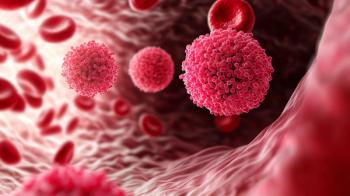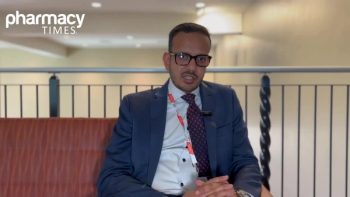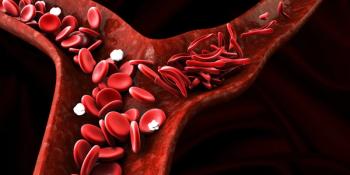
Coordinated Care in Managing Patients With NVAF
Gary M. Besinque, PharmD, FCSHP; Jaime E. Murillo, MD; Juvairiya Pulicharam, MD; Ralph J. Riello III, PharmD, BCPS; and Peter Salgo, MD, highlight the various stakeholders who are often involved in the management of patients with nonvalvular atrial fibrillation and reinforce the role of the pharmacist in managing patients who are receiving anticoagulation therapy.
Transcript: Peter Salgo, MD: Let’s run through this team. Who’s making these decisions? Where I work, almost all of the hospital administrators are MDs. There are a lot of senior pharmacy members in this group as well; some RNs, as well. These are RNs with doctorates. These are people who have really spent a lot of time looking at the data. This is not nonmedical people doing this work. I would think that this really does help.
Jaime E. Murillo, MD: Yes. I think this is part of the transformation of healthcare management. There’s not just a clinical side that is being arbitrarily handled by physicians, and an administrative side that is handled by administrators. It’s a collaborative process where you have dyads and triads. And, we have IT [information technology]. Let’s not forget that IT is playing a major role in this process through the creation of protocols. I think this is where we have an opportunity, not just with collaboration, but in distributing the rolls properly.
People talk about atrial fibrillation [AFIB] management and cardiologists. Should atrial fibrillation only be just managed by cardiologists? I would argue that the answer is no. It’s such a prevalent condition. You have trained pharmacists and trained primary care physicians. They should be able to handle this. Then, leave the part that is more complex—the associated heart failure, the associated hemodynamic instability—to the cardiologist to manage. But, everybody should participate in the creation of those protocols.
Peter Salgo, MD: Yes. It seems to me that if everybody with AFIB needed a cardiologist, we’d run out of cardiologists.
Juvairiya Pulicharam, MD: Yes. I think it’s important to emphasize the protocol even after discharge. It’s a transition of care. The goal is to reduce 30-day admission rates. We all know that the hospitalist should be talking to the primary care physician. We think it’s happening but, if you really look at it, it’s not happening as much as it should.
Peter Salgo, MD: Well, it has to happen.
Juvairiya Pulicharam, MD: It has to happen.
Peter Salgo, MD: You can’t just launch somebody out into the real world and say, “We gave you these drugs and will let you leave. Please call your doctor and let him know.”
Juvairiya Pulicharam, MD: And maybe they have the same kinds of drugs at home, or something else. They go home and they start taking what they have at home. So, again, the role of pharmacists in medication reconciliation and that transition... Now we have transition coaches for the transitions of care.
Peter Salgo, MD: Transition coaches—I’m not sure that sounds OK to me.
Juvairiya Pulicharam, MD: They’re very knowledgeable. The hospitalist and the primary care physician always talk to each other like they should. Then, we have these coaches who can talk to these people on their own time.
Peter Salgo, MD: So this is someone who can help coordinate. How about a coordinator?
Juvairiya Pulicharam, MD: Or navigator.
Peter Salgo, MD: Navigator. Let’s take a look at a couple of these scenarios. You’ve alluded to the ED [emergency department]. Somebody who’s on one of these drugs has a traumatic injury—a car accident, whatever—and winds up in the ED. Who handles this in the emergency room? It isn’t always somebody who’s an expert with these drugs. How do you coordinate, or does everybody know an expert?
Gary M. Besinque, PharmD, FCSHP: Quite a lot of facilities have an ED pharmacist. Some are available 24/7. So, that’s a good spot to be at when you have somebody roll in after an event.
Peter Salgo, MD: Frankly, it seems to me that the ED would be the spot to focus on all of this. This is where people come in with acute bleeding, whether from a spontaneous intracranial bleed or from trauma. You get a medication list and you reconcile this, if you will. But you realize, “Oh my gosh, they are on one of these novel agents.” You yell, “Pharmacy!” Then, pharmacy comes in.
Ralph J. Riello III, PharmD, BCPS: Yes, absolutely. So the emergency department is ground zero for all of this kind of stuff. That’s where a lot of the medication reconciliation has to occur, and that’s where a lot of unexpected problems become discovered.
Peter Salgo, MD: Like what? What are the unexpected problems?
Ralph J. Riello III, PharmD, BCPS: Finding out that somebody who showed up with severe acute kidney injury was perhaps taking rivaroxaban at home and had just taken it right before they came in. Maybe they are not bleeding now, but we can expect to see some fireworks happen shortly. We really rely on our emergency department pharmacist to help triage these kinds of issues. We expect to use, perhaps, a rapid antidote, and we want that to be quick. It’s expected that our ED pharmacist makes that call and gets the ball rolling. This would be similar to our turnaround with alteplase for stroke, for instance.
Peter Salgo, MD: Are pharmacists on call in these emergency departments? Should they be 24/7, 365 days per year?
Jaime E. Murillo, MD: Absolutely. Again, pharmacy should be an integral part of any care team. I cannot emphasize a team approach enough. They’re an integral part of every team. The ED plays a major role. You mentioned that with all of these medications, polypharmacy is a major problem. We all know that. Those patients show up on apixaban, plus aspirin, plus Ibuprofen. Nobody has checked the list of those medications. So, someone needs to pay attention.
Peter Salgo, MD: This brings something to mind. I keep coming back to aspirin because it annoys me in AFIB. Any of the NSAIDs [nonsteroidal anti-inflammatory drugs], with their effects on renal function, are an issue. Unless it’s for cardiovascular protection or ischemic heart disease protection, why would you give a NSAID to somebody and risk deteriorated renal function? They’re on a drug that is renally excreted and an overdose of this drug is a concern. Would you just wipe some of this stuff out, allowing the NSAIDs?
Ralph J. Riello III, PharmD, BCPS: I would definitely talk to the patient. “Listen, if you’re reaching for this NSAID whenever you have a headache, like Ibuprofen, for instance, stop. Please use Tylenol instead. You’re on an anticoagulant now. Anything that can affect your hemostasis, and your blood may be more thin, can potentially be the next thing that triggers a bleed.
Peter Salgo, MD: If you’re going to reach for the Tylenol and you’re on Coumadin [warfarin], what’s that interaction like?
Ralph J. Riello III, PharmD, BCPS: That’s an unexpected interaction too.
Peter Salgo, MD: Sure.
Ralph J. Riello III, PharmD, BCPS: And people just think it’s a common, safe option—over-the-counter Tylenol. Maybe a lot of the education is focused on those leafy greens and antibiotics. They don’t necessarily talk about the over-the-counter stuff. St. John’s Wort is one of the key characteristic ones that never…
Peter Salgo, MD: I don’t know about this. Tell me about St. John’s Wort.
Ralph J. Riello III, PharmD, BCPS: Oh man. And saw palmetto, and all of these things. These are common over-the-counter products. They are marketed to treat mood disorders and prostate issues. They are not benign. Unfortunately, because they’re supplements that are provided via over the counter, they’re billed as safe. “I can take them whenever I want.” The fact of the matter is, they interact with a host of medications, particularly with warfarin.
Peter Salgo, MD: I’ve seen a lot of these supplements advertised as, “It’s all natural. Therefore, it’s safe.” I can think of a lot of natural things that I wouldn’t inject.
Ralph J. Riello III, PharmD, BCPS: An earthquake is natural.
Newsletter
Stay informed on drug updates, treatment guidelines, and pharmacy practice trends—subscribe to Pharmacy Times for weekly clinical insights.



















































































































































































































